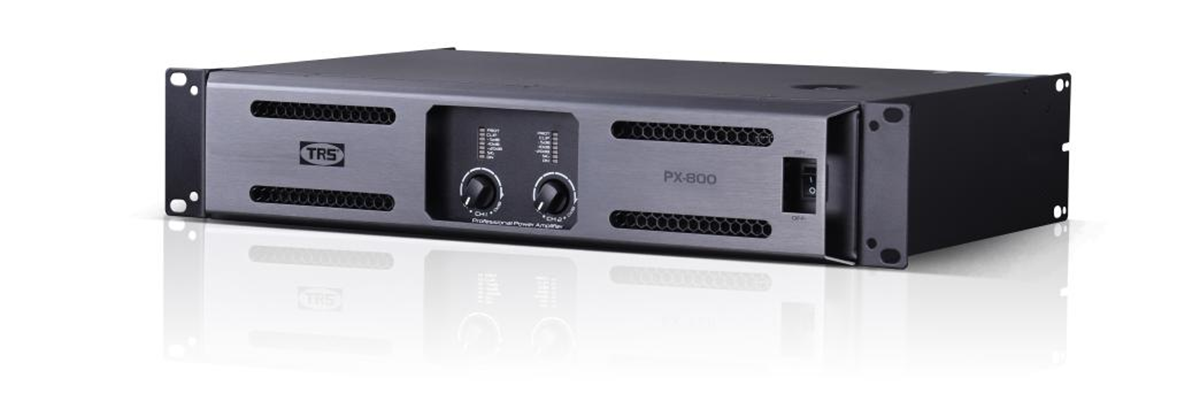In modern audio systems, amplifiers are undoubtedly one of the most critical components. It not only affects the quality of sound, but also determines the overall performance and user experience of the system. This article will delve into the core elements of power amplifiers to help you understand why these elements are so important.
1. Power output: Drive the heart of the horn
One of the main functions of an amplifier is to provide sufficient power to drive the speaker. The power output determines whether the audio system can maintain clear and undistorted sound at various volumes. The power output of a power amplifier is usually expressed in watts (W). Choosing the appropriate power amplifier requires consideration of the following points:
Rated power of the speaker: The power of the amplifier should match the rated power of the speaker. Too little power may cause insufficient volume and distortion, while too much power may damage the speaker.
Room size and acoustic environment: In larger rooms or environments with poor sound absorption, higher power amplifiers are required to ensure uniform and clear sound coverage.
Music type and listening habits: Users who enjoy listening to high dynamic range music may need higher power amplifiers to maintain the details and dynamics of the music at high volumes.
2. Distortion: An invisible killer of sound quality
Distortion is one of the important indicators for evaluating the quality of power amplifiers. It refers to any unnecessary changes in the input signal during the amplification process. There are mainly the following types of distortion:
Harmonic distortion: The frequency multiple generated during signal amplification. This distortion can make the sound unnatural and affect the sound quality.
Inter-modulation distortion: a new frequency generated when signals of different frequencies are mixed in an amplifier, which can lead to unwanted tones in the audio signal.
Trans-conductance distortion: The non-linear relationship between the output of a power amplifier and the input signal, usually occurring during overload.
Excellent amplifier design will minimize these distortions and provide clear and natural sound quality.

3. Frequency response: Restoring the width and depth of sound
Frequency response refers to the frequency range that a power amplifier can effectively amplify, usually measured in Hertz (Hz). An ideal amplifier should provide smooth and uniform amplification throughout the entire audio spectrum (usually from 20Hz to 20kHz). The balance of frequency response directly affects the restoration effect of sound:
Low frequency response: affects the depth and impact of the bass. Amplifiers with good low-frequency response can provide stronger bass effects.
Mid frequency response: mainly affects the performance of vocals and instruments, and is the core part of sound quality.
High frequency response: It affects the clarity and detail performance of high notes, and a power amplifier with good high frequency response can make the sound more transparent and realistic.
4. Signal to noise ratio (SNR): guarantee of pure sound quality
Signal to Noise Ratio is an indicator that measures the ratio between useful signal and noise in the output signal of a power amplifier, usually expressed in decibels (dB). High signal-to-noise ratio means that the power amplifier produces less background noise when amplifying the signal, ensuring the purity of sound quality. Choosing a power amplifier with a high signal-to-noise ratio can reduce auditory interference and provide a more immersive listening experience.
5. Circuit design of power amplifiers: the cornerstone of performance determination
The internal circuit design of a power amplifier directly affects its performance and sound quality. There are several common circuit designs:
Class A amplifier: With the best sound quality but the lowest efficiency, it is suitable for high-end audio systems that pursue the ultimate sound quality.
Class B amplifier: High efficiency but significant distortion, commonly used in mid to low-end audio systems.
Class AB amplifier: It combines the advantages of both Class A and Class B, with high efficiency and good sound quality, and is currently the mainstream amplifier design.
Class D amplifier: With the highest efficiency and small size, it is suitable for portable devices and modern home theater systems.
Every circuit design has its advantages and disadvantages, and choosing the type of amplifier that suits your needs is crucial.
6. Functions and interfaces of power amplifiers: meeting diverse needs
Modern amplifiers not only require excellent sound quality, but also need to provide rich functions and interfaces to adapt to diverse usage scenarios. For example:
Multiple input interfaces, such as RCA, fiber optic, coaxial, HDMI, etc., facilitate the connection of different audio source devices.
Wireless connection: such as Bluetooth and Wi Fi, convenient for integration with mobile devices and smart home systems.
Multi channel support: suitable for home theater systems, providing a more immersive sound experience.
Choosing an excellent amplifier requires comprehensive consideration of factors such as power output, distortion, frequency response, signal-to-noise ratio, circuit design, functionality, and interfaces. Only in this way can we ensure the best performance and user experience of the audio system. Whether you are a music enthusiast or a home theater enthusiast, understanding and paying attention to these key elements will help you choose the amplifier device that best suits you, making every listening experience a pleasure.

Post time: Jun-06-2024
